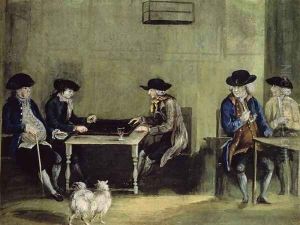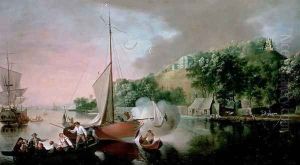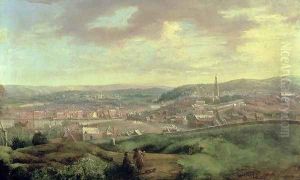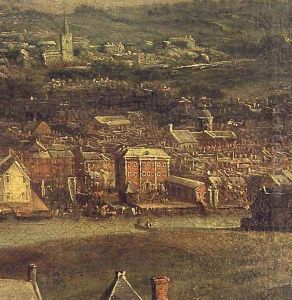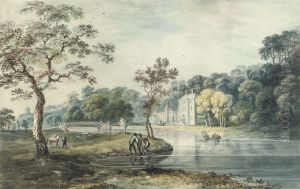Nathaniel Grogan Paintings
Nathaniel Grogan was an Irish artist born in 1740, known primarily for his work as a landscape painter, engraver, and illustrator. His life and career were predominantly centered around Cork, Ireland, where he made significant contributions to the local art scene of the late 18th century. Despite the limited documentation on his early life and training, Grogan developed a distinct style that has allowed his work to be recognized for its unique approach to depicting the Irish landscape and daily life of his time.
Grogan's artistic output includes a variety of subjects, but he is particularly noted for his landscapes and scenes of Cork and its environs. His works often capture the natural beauty of the Irish countryside, as well as the bustling activity of Cork's streets and markets. This dual focus not only highlights Grogan's versatility as an artist but also provides valuable insights into the urban and rural dynamics of 18th-century Ireland.
In addition to his paintings, Nathaniel Grogan was also skilled in the art of engraving. He produced several works in this medium, which contributed to the dissemination of his and others' artworks to a broader audience. His engravings, characterized by their fine detail and accuracy, served as important visual records of the landscapes and daily life of his era.
Despite his contributions to the Irish art scene, Grogan's work was not widely recognized outside of Ireland during his lifetime. However, in the years following his death in 1807, his reputation grew, and he came to be appreciated as an important figure in Irish art history. Today, Nathaniel Grogan's works are held in several public and private collections, serving as a testament to his skill and his dedication to capturing the essence of 18th-century Ireland.
Overall, Nathaniel Grogan's legacy as an artist lies in his ability to document and celebrate the world around him, offering future generations a window into the landscape and society of his time. Through his paintings and engravings, he has left behind a valuable cultural and historical record of Ireland, marking him as a significant figure in the development of Irish art.
